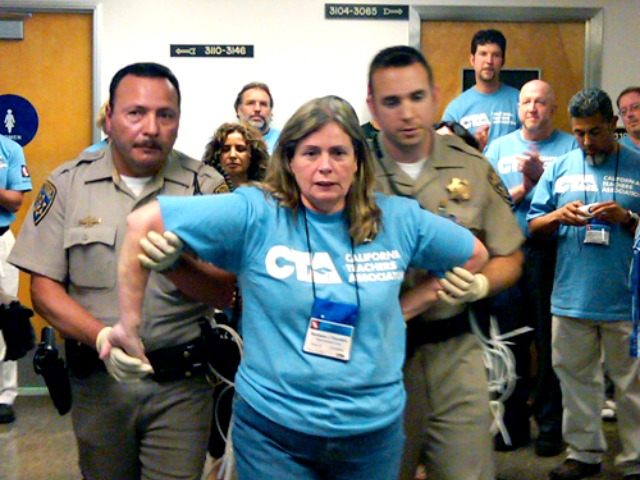U.S. public sector unions are politically powerful because they collect and spend at least $4.0 billion in dues each year. But California unions are overwhelmingly powerful because although the state has just 11 percent of the nation’s population, California’s public sector unions collect and spend $1 billion, or 25 percent of all U.S. public sector union dues each year.
According to the California Policy Center, most of the cash is used to “influence politics, either directly through political contributions or indirectly through “soft” money that unions deploy to mobilize “volunteers,” fund “educational” programs, and pay a permanent professional army of union employees who supposedly spend most of their time on collective bargaining but in reality are full-time political operatives.”
California leads the nation with 2.5 million union members, far ahead of New York with 2.0 million, and Illinois with just 800,000 members. Public sector workers nationally have a union membership rate of 35.7 percent of the workforce, more than five times higher than that of private-sector workers at 6.6 percent, according to the Bureau of Labor Statistics.
Fully 17.4 percent of California workers are unionized, due to the huge numbers of public sector members.
California’s 1,407,504 reported public sector union members pay either dues or agency fees of about $775 per year, or approximately $1.1 billion annually. But since the payroll data provided by the California Controller does not include K-12 teachers, nor local police and firefighters–professions where the annual dues are almost always over $1,000 per year–the estimated $1.1 billion for annual California public sector union spending is undoubtedly understated.
Ed Ring of the California Policy Center comments:
Government reformers and transparency advocates are fond of attacking “money in politics.” They attack “soft money” and “dark money” out of concerns that “rich billionaires” and “out-of-state corporations” have too much political influence.” But “at the state and local level in California, there is no amount of money, anywhere, that comes close to the sums that are deployed by government unions to control our government.
Public corporations and private sector unions are required to submit far more publicly available reports on their operations than public sector unions. This makes it very difficult to estimate how many government union members there are in California. California has about 1.7 million government workers. The State of California has 397,348 “full-time equivalent” workers, and local government has another 1,313,344 full-time workers, according to the U.S. Census,
The California Policy Center reviewed the “990 forms” that unions file with the IRS. The California Teachers Association’s 990 reported “dues revenue” of $172.3 million in 2012 (the most current available report). But that number is understated because statewide unions, such as the CTA, the CSEA, the CFT, and the CPF, collect revenue from members through their local affiliates, which themselves retain most of the money for local collective bargaining and political expenditures.
There are over 1,300 CTA local affiliates, 45 American Federation of Teachers local affiliates, and several hundred CSEA (School Employees) local affiliates,
There are a total of over 6,000 local government union organizations in California, each of them an independent financial entity. Each of the 6,000 is merely required to file a minimal 990 form that does not disclose financial transfers between entities to determine how much they collect or spend.
California’s nickname is the Golden State. For those collecting union dues to spend on influencing government, California is truly golden.

COMMENTS
Please let us know if you're having issues with commenting.